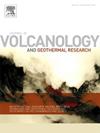Magmatic evolution of basaltic rear-arc monogenetic volcanism in southern Colombia
IF 2.3
3区 地球科学
Q2 GEOSCIENCES, MULTIDISCIPLINARY
Journal of Volcanology and Geothermal Research
Pub Date : 2025-03-09
DOI:10.1016/j.jvolgeores.2025.108312
引用次数: 0
Abstract
The Guamuez-Sibundoy Monogenetic Volcanic Field is located in the Southern Volcanic Segment of the Central Cordillera of Colombia. The field hosts 19 volcanoes, including scoria cones, maars and lava domes. This volcanism is part of the volcanic arc related to the interaction between the Nazca and South American plates. This interaction has led to a transtensional tectonic environment represented by pull-apart basins linked to the so-called Algeciras Fault System. This study integrates different techniques including field geology, petrography, mineral chemistry, whole-rock chemistry and geothermobarometric analysis in order to know the compositional characteristics and reconstruct the evolution of the magmas that gave rise to several volcanoes in the field: Guayapungo, Yaku, Mujundinoy Sur and Fuisanoy volcanoes. This study is the starting point to understand the possible future activity in the field. The eruptive products associated with these volcanoes correspond to concentrated and dilute pyroclastic density currents and lava flows, the latter predominating throughout the field. Petrographically, all the studied rocks are porphyritic, with olivine (Fo71–90), clinopyroxene (Wo33–48, En36–54, Fe7–16), orthopyroxene (Wo3–5, En68–71, Fe24–28), plagioclase (An26–82), amphibole (magnesiohastingsite and tschermakite) and Fe-Ti oxides as mineral phases embedded in a microcrystalline, cryptocrystalline and glassy groundmass. They present glomeroporphyritic texture in olivine and pyroxene, zoning in plagioclase, skeletal in olivine and pyroxene, and spinifex-like texture in pyroxene. Fluidal and serial textures are also common. Fe-Ti oxides are present as a minor phase in all volcanoes. Chemically, the volcanoes are basaltic and basaltic andesite in composition and display calc-alkaline affinity, typical of subduction environments. Geothermobarometric analyses indicate that the crystallisation conditions for olivine were 1188–1137 °C, for clinopyroxene 1199–1015 °C and 1.7–0.2 GPa and for plagioclase 1127–1077 °C and 0.6–0.2 GPa. The analyses indicate that the magmas share a common origin at the asthenosphere-lithosphere boundary and that fractional crystallisation was the most important magmatic evolution process during the magma ascent. The crystallisation conditions of the mineral phases indicate olivine, followed by clinopyroxene, as the first to start forming at the mantle-crust boundary (64–7 km), while plagioclase crystallised only at cortical levels (24–7 km). Chemical data and crystallisation conditions indicate that the Guayapungo volcano ascended directly from the mantle and experienced a rapid ascent from 15 km to the surface. The lack of crystallisation, in addition to the presence of amphibole xenocrysts, indicates that the Yaku and Mujundinoy Sur magmas experienced mild assimilation. Crystallisation conditions and further evolution at Fuisanoy volcano indicate a slow ascent.
哥伦比亚南部玄武岩弧后单生火山作用的岩浆演化
Guamuez-Sibundoy单成因火山田位于哥伦比亚中部科迪勒拉的南部火山段。该地区有19座火山,包括火山锥、火星和熔岩圆顶。这种火山活动是火山弧的一部分,与纳斯卡板块和南美板块之间的相互作用有关。这种相互作用导致了一个以拉分盆地为代表的张拉构造环境,与所谓的阿尔赫西拉斯断裂系统相联系。本研究综合了野外地质、岩石学、矿物化学、全岩化学和地温压分析等不同技术,了解了该地区瓜亚彭戈火山、雅库火山、Mujundinoy Sur火山和Fuisanoy火山的岩浆组成特征,并重建了岩浆的演化过程。这项研究是了解该领域未来可能活动的起点。与这些火山相关的喷发产物对应于浓缩和稀释的火山碎屑密度流和熔岩流,后者在整个领域占主导地位。岩石学上,研究的岩石均为斑岩型,矿物相为橄榄石(Fo71-90)、斜辉石(Wo33-48、En36-54、Fe7-16)、正辉石(Wo3-5、En68-71、Fe24-28)、斜长石(An26-82)、角闪洞(闪镁矿和闪辉岩)和Fe-Ti氧化物嵌套在微晶、隐晶和玻璃状地块中。它们在橄榄石和辉石中表现为肾球状斑状结构,在斜长石中表现为带状结构,在橄榄石和辉石中表现为骨状结构,在辉石中表现为棘状结构。流体和序列纹理也很常见。铁-钛氧化物在所有火山中都以小相的形式存在。火山化学成分为玄武岩和玄武岩安山岩,具有钙碱性亲和性,属于典型的俯冲环境。地温分析表明,橄榄石的结晶温度为1188 ~ 1137℃,斜辉石的结晶温度为1199 ~ 1015℃,结晶温度为1.7 ~ 0.2 GPa,斜长石的结晶温度为1127 ~ 1077℃,结晶温度为0.6 ~ 0.2 GPa。分析表明,岩浆在软流圈-岩石圈边界处具有共同的起源,在岩浆上升过程中,部分结晶是最重要的岩浆演化过程。矿物相的结晶条件表明橄榄石,其次是斜辉石,首先在地幔-地壳边界(64-7公里)开始形成,而斜长石仅在皮质水平(24-7公里)结晶。化学数据和结晶条件表明,瓜亚彭戈火山直接从地幔上升,并经历了从15公里到地表的快速上升。缺乏结晶,加上角闪洞异种结晶的存在,表明雅库和Mujundinoy Sur岩浆经历了温和的同化。结晶条件和Fuisanoy火山的进一步演化表明它是缓慢上升的。
本文章由计算机程序翻译,如有差异,请以英文原文为准。
求助全文
约1分钟内获得全文
求助全文
来源期刊
CiteScore
5.90
自引率
13.80%
发文量
183
审稿时长
19.7 weeks
期刊介绍:
An international research journal with focus on volcanic and geothermal processes and their impact on the environment and society.
Submission of papers covering the following aspects of volcanology and geothermal research are encouraged:
(1) Geological aspects of volcanic systems: volcano stratigraphy, structure and tectonic influence; eruptive history; evolution of volcanic landforms; eruption style and progress; dispersal patterns of lava and ash; analysis of real-time eruption observations.
(2) Geochemical and petrological aspects of volcanic rocks: magma genesis and evolution; crystallization; volatile compositions, solubility, and degassing; volcanic petrography and textural analysis.
(3) Hydrology, geochemistry and measurement of volcanic and hydrothermal fluids: volcanic gas emissions; fumaroles and springs; crater lakes; hydrothermal mineralization.
(4) Geophysical aspects of volcanic systems: physical properties of volcanic rocks and magmas; heat flow studies; volcano seismology, geodesy and remote sensing.
(5) Computational modeling and experimental simulation of magmatic and hydrothermal processes: eruption dynamics; magma transport and storage; plume dynamics and ash dispersal; lava flow dynamics; hydrothermal fluid flow; thermodynamics of aqueous fluids and melts.
(6) Volcano hazard and risk research: hazard zonation methodology, development of forecasting tools; assessment techniques for vulnerability and impact.

 求助内容:
求助内容: 应助结果提醒方式:
应助结果提醒方式:


